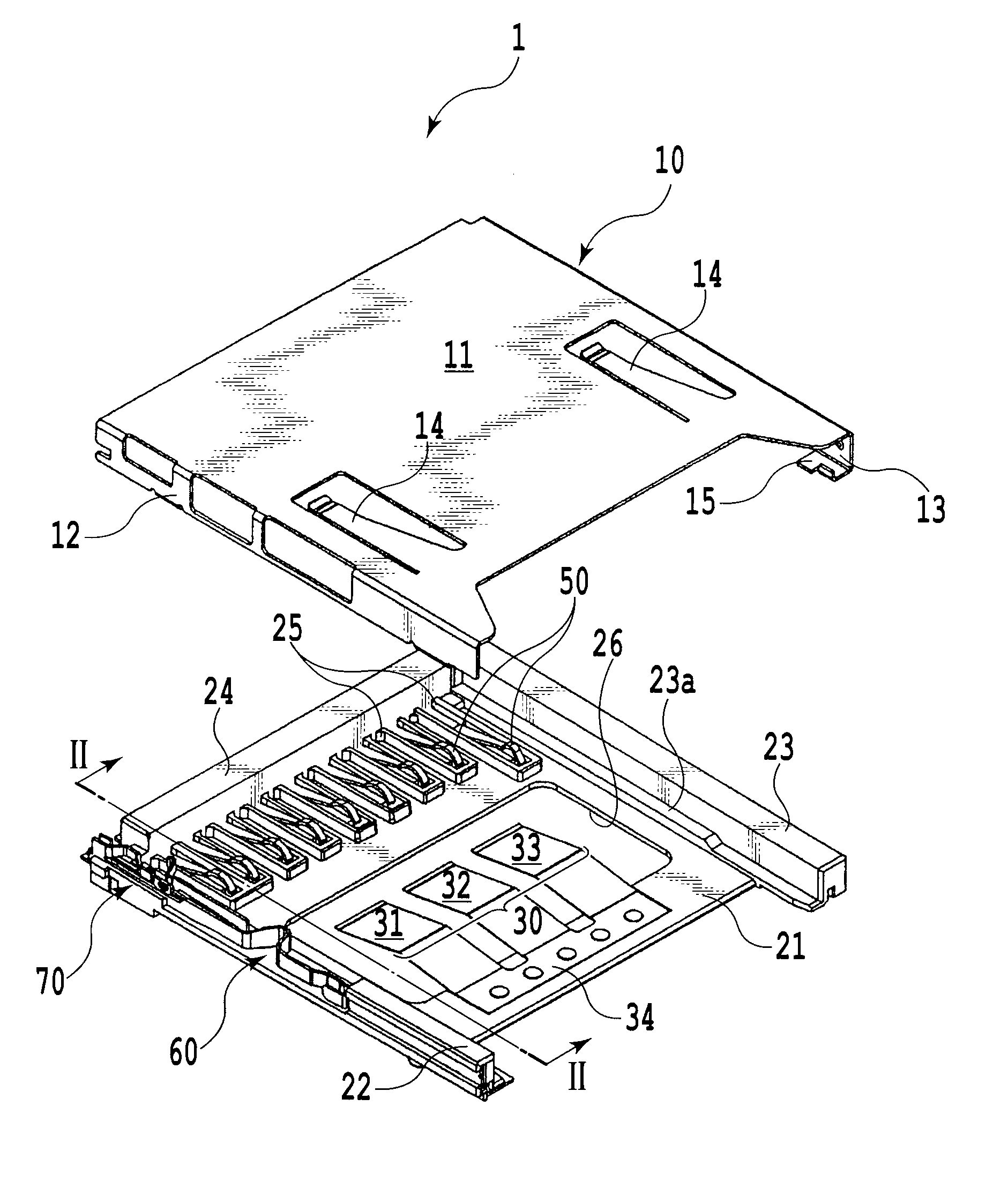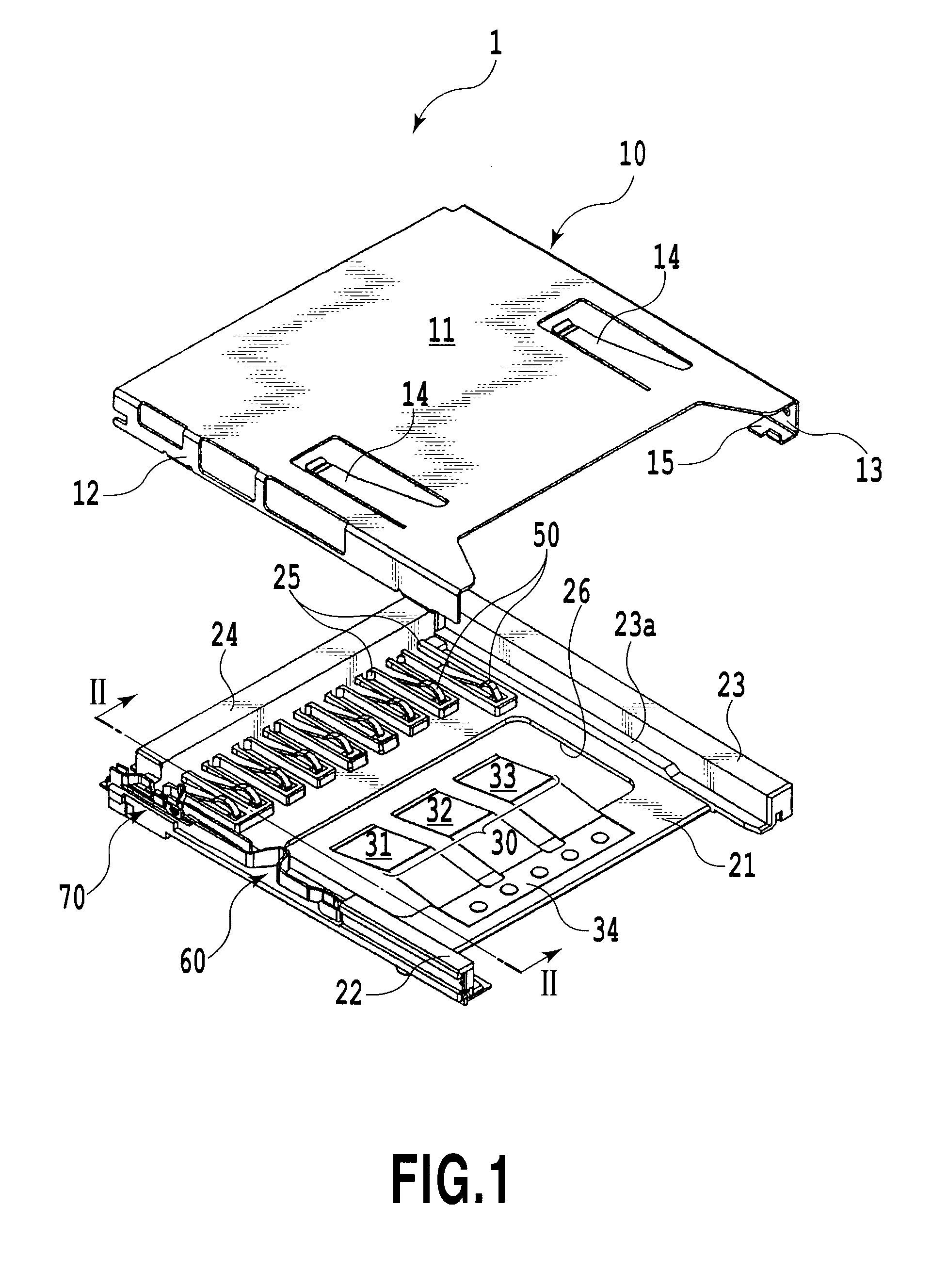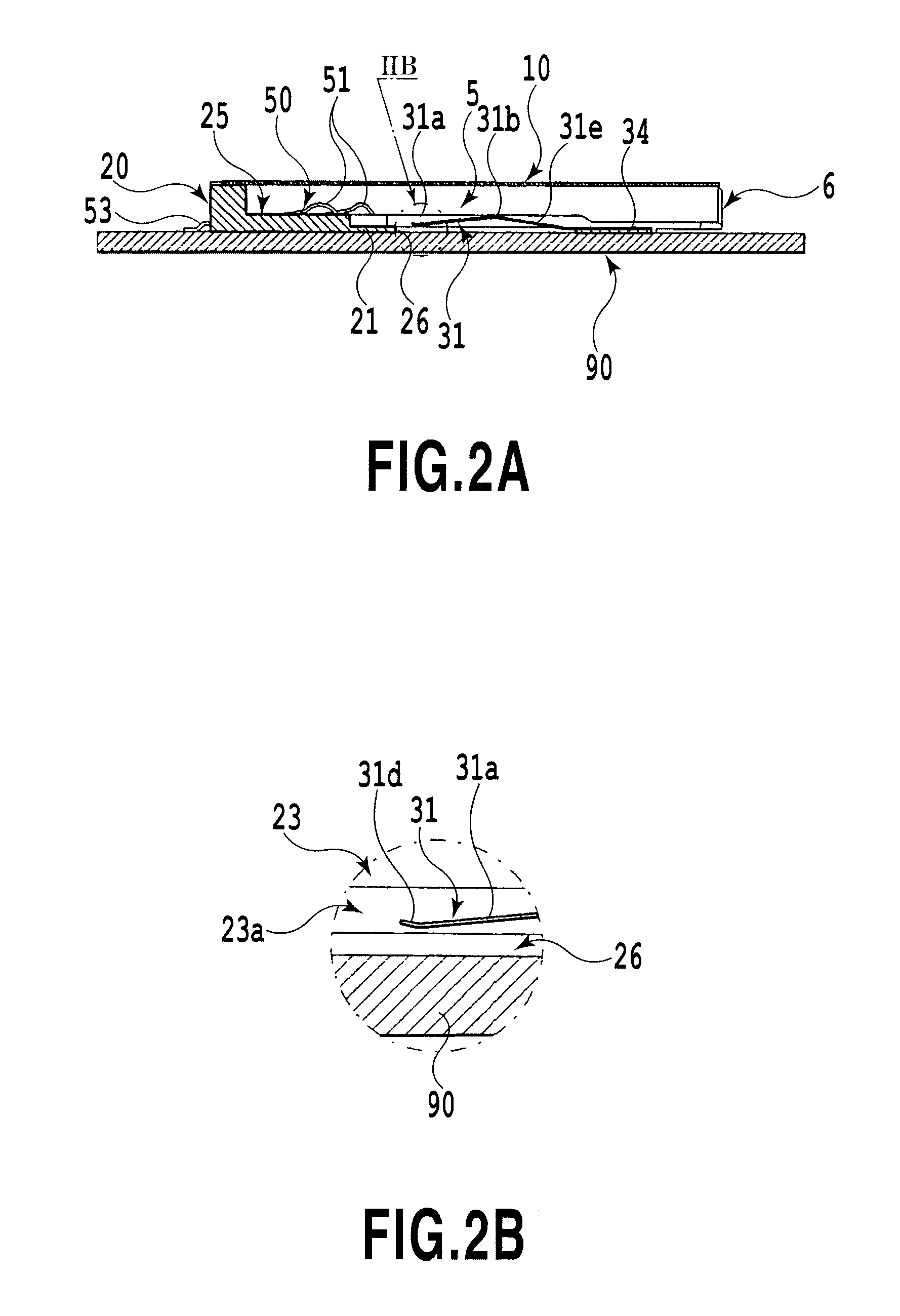Card connector
- Summary
- Abstract
- Description
- Claims
- Application Information
AI Technical Summary
Benefits of technology
Problems solved by technology
Method used
Image
Examples
example 1
[0028]FIG. 1 is an exploded perspective view of a card connector for small card according to Example 1 of the present invention. FIG. 2A is a schematic cross-sectional view of the card connector for small card of FIG. 1 being fitted onto a printed board of an electronic device or the like, which is taken along a II-II line and shows a state where an IC card is not inserted. FIG. 2B is a partially enlarged cross-sectional view of FIG. 2A. FIG. 3A is a schematic cross-sectional view of the card connector for small card of FIG. 1 as similar to FIG. 2A, which shows a state where the IC card is inserted. FIG. 3B is a partially enlarged cross-sectional view of FIG. 3A as similar to FIG. 2B. FIG. 4A is a perspective view of a modified example of the card connector for small card according to Example 1 of the present invention, which shows the connector in a state where a cover member is detached therefrom. FIG. 4B is a perspective view of another modified example of the card connector for ...
example 2
[0053]FIG. 5 is an exploded perspective view of a card connector for small card according to Example 2 of the present invention. FIG. 6A is a schematic cross-sectional view of the card connector for small card of FIG. 5 being fitted onto a printed board of an electronic device, which is taken along a VI-VI line and shows a state where an IC card is not inserted. FIG. 6B is a partially enlarged cross-sectional view of FIG. 6A. FIG. 7A is a schematic cross-sectional view of the card connector for small card of FIG. 5 as similar to FIG. 7A, which shows a state where the IC card is inserted. FIG. 7B is a partially enlarged cross-sectional view of FIG. 7A as similar to FIG. 6B. FIG. 8A is a schematic cross-sectional view of a modified example of the card connector according to Example 2 of the present invention, which shows the card connector fitted onto a printed board of an electronic device in a state where an IC card is not inserted. FIG. 8B is a partially enlarged cross-sectional vi...
PUM
 Login to View More
Login to View More Abstract
Description
Claims
Application Information
 Login to View More
Login to View More - R&D
- Intellectual Property
- Life Sciences
- Materials
- Tech Scout
- Unparalleled Data Quality
- Higher Quality Content
- 60% Fewer Hallucinations
Browse by: Latest US Patents, China's latest patents, Technical Efficacy Thesaurus, Application Domain, Technology Topic, Popular Technical Reports.
© 2025 PatSnap. All rights reserved.Legal|Privacy policy|Modern Slavery Act Transparency Statement|Sitemap|About US| Contact US: help@patsnap.com



